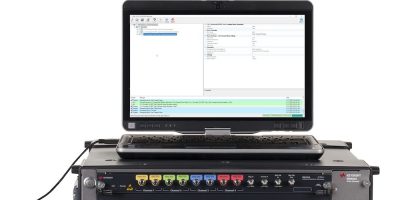To support developers’ work to automate and connect end applications, Microchip has introduced the PIC32CM JH microcontroller. The 512kbyte flash, 5.0V, Dual CAN FD device delivers features typically only available on more expensive, higher performance devices, said Microchip.
Automation and connectivity rely on industry standards related to functional safety and cybersecurity protection to ensure products operate safely and securely. To provide manufacturers with an MCU equipped with components that meet ISO 26262 functional safety and ISO/SAE 21434 cybersecurity engineering standards, the PIC32CM JH is the industry’s first MCU-based on the Arm Cortex-M0+ architecture with AutoSAR support, memory built-in self test (MBIST) and secure boot.
The PIC32CM JH is compatible with AutoSAR, an open software architecture, providing suppliers with the ability to change to lower-level hardware while keeping the original application code for ease of migration. AutoSAR-ready is designed to streamline the development process and reduce overall costs. When using AutoSAR, Microchip offers ASIL B microcontroller abstraction layers (MCALs) for functional safety applications, providing the lower-level hardware interface to the MCU.
Automotive industry OEMs require both functional safety and cybersecurity protection for many in-vehicle applications including touch buttons and touch wheels, door controls and console controls, and body applications such as advanced driver assistance systems (ADAS). Pairing the PIC32CM JH with one of Microchip’s Trust Anchor TA100 CryptoAutomotive security ICs, complies to ISO/SAE 21434, the new Cybersecurity standard for automotive. The TA100 employs secure hardware-based cryptographic key storage and cryptographic counter measures to eliminate potential back doors linked to software weaknesses.
Rod Drake vice president of Microchip Technology’s 32-bit MCU business unit, commented: “OEMs and other manufacturers now have the option to use an entry-level Arm Cortex-M0+ based MCU to meet compliance requirements previously only available on higher-end MCUs.”
The secure boot authenticates the code and prevents malicious code from being loaded onto the MCU. Other hardware features on the PIC32CM JH MCU are error correction code (ECC) with fault injection, loopbacks on the communications interfaces, system memory protection unit and MBIST.
MBIST is the industry standard method of testing embedded memories and can quickly test the integrity of the SRAM to ensure it is functioning properly before the code is run to mitigate failures. To support developers with implementation, the PIC32CM JH has a safety manual, failure modes effects and diagnostic analysis (FMEDA) and diagnostic code targeting to ISO 26262 ASIL B.
The PIC32CM JH also includes advanced touch with Driven Shield Plus, for noise and water tolerant operation. This feature is necessary for home appliances, industrial and automotive applications requiring touch operation in harsh environments.
Microchip also provides the PIC32CM JH01 Curiosity Pro development kit (Part number EV81X90A) to support the PIC32CM JH MCU.
The PIC32CM JH MCU and EV81X90A are available now.







